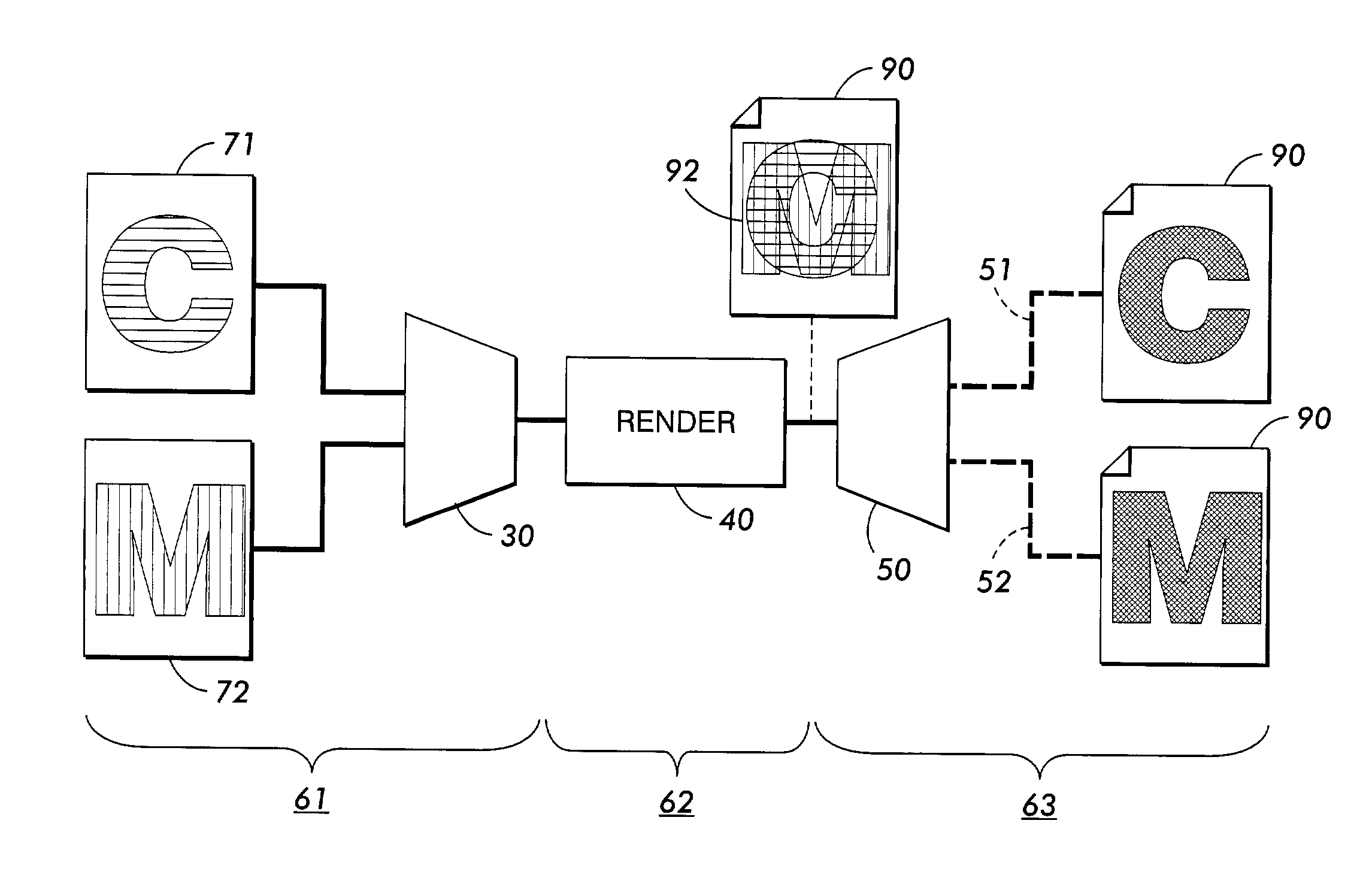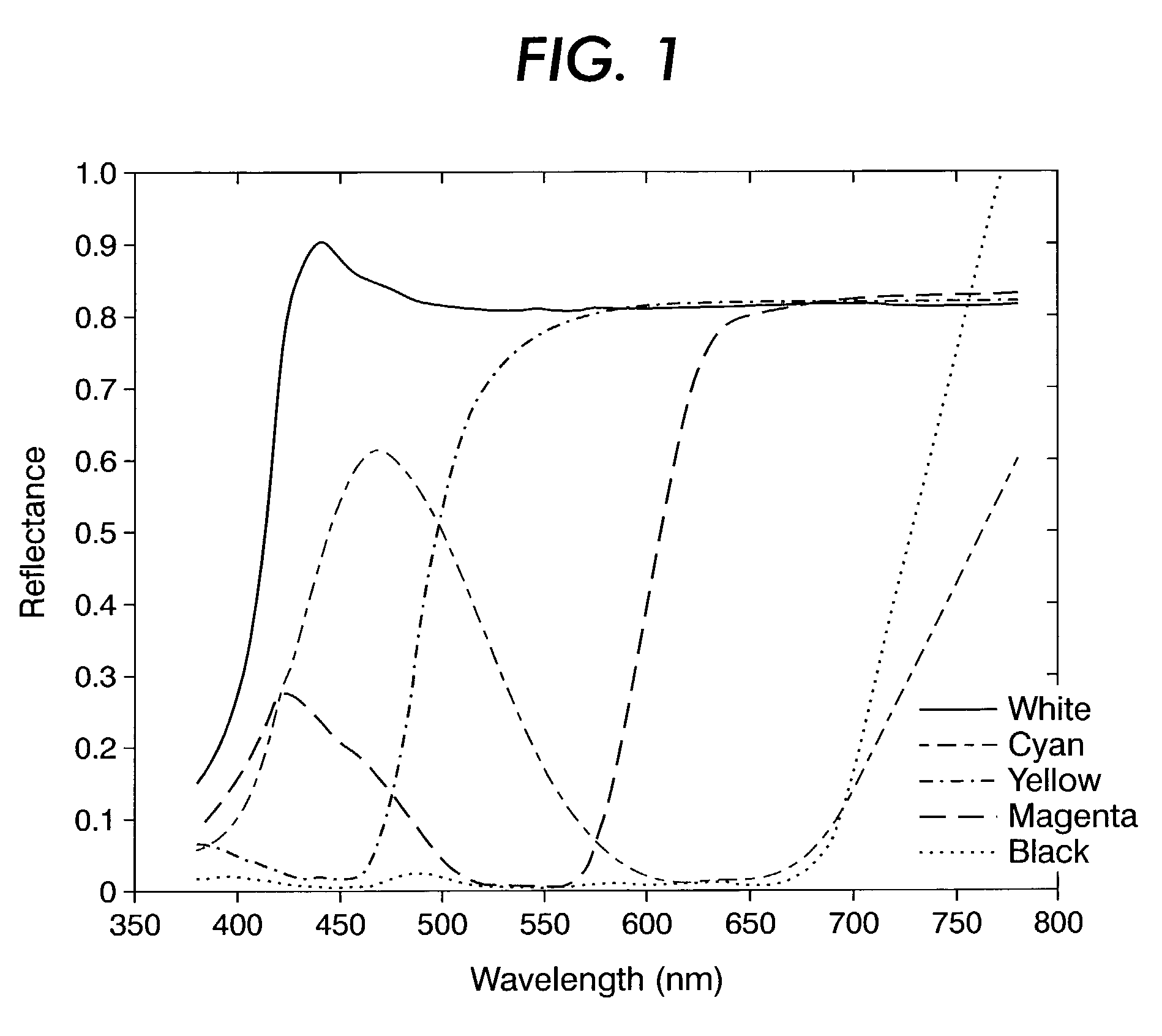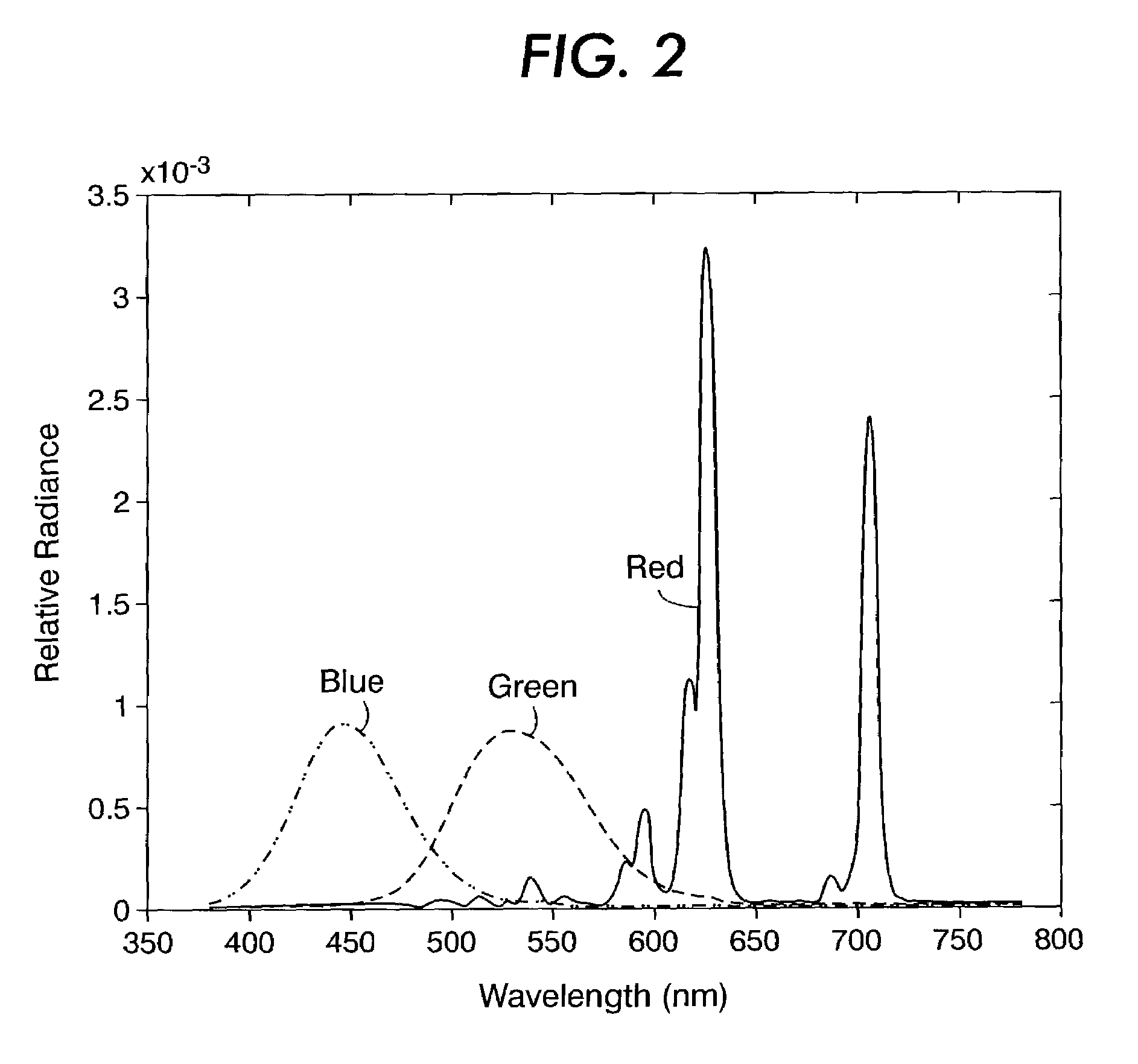Systems for spectral multiplexing of source images including a textured source image to provide a composite image, for rendering the composite image, and for spectral demultiplexing of the composite image
- Summary
- Abstract
- Description
- Claims
- Application Information
AI Technical Summary
Benefits of technology
Problems solved by technology
Method used
Image
Examples
Embodiment Construction
Definitions of Terms
[0052]Color—A color can be uniquely described by three main perceptual attributes: hue, denoting whether the color appears to have an attribute according to one of the common color names, such as red, orange, yellow, green, blue, or purple (or some point on a continuum); colorfulness, which denotes the extent to which hue is apparent; and brightness, which denotes the extent to which an area appears to exhibit light. Light sources used to illuminate objects for viewing are typically characterized by their emission spectrum and to a reduced degree by their color temperature, which is primarily relevant for characterization off sources with a spectrum similar to a black body radiator. See, for instance, Hunt, R. W. G., Measuring Colour, Ellis Horwood, 1991, and Billmeyer and Saltzman, Principles of Color Technology, 3rd Ed. (Roy S. Berns), John Wiley & Sons, 2000.
[0053]Chroma—Colorfulness of an area judged as a proportion of the brightness of a similarly illuminate...
PUM
 Login to View More
Login to View More Abstract
Description
Claims
Application Information
 Login to View More
Login to View More - R&D
- Intellectual Property
- Life Sciences
- Materials
- Tech Scout
- Unparalleled Data Quality
- Higher Quality Content
- 60% Fewer Hallucinations
Browse by: Latest US Patents, China's latest patents, Technical Efficacy Thesaurus, Application Domain, Technology Topic, Popular Technical Reports.
© 2025 PatSnap. All rights reserved.Legal|Privacy policy|Modern Slavery Act Transparency Statement|Sitemap|About US| Contact US: help@patsnap.com



